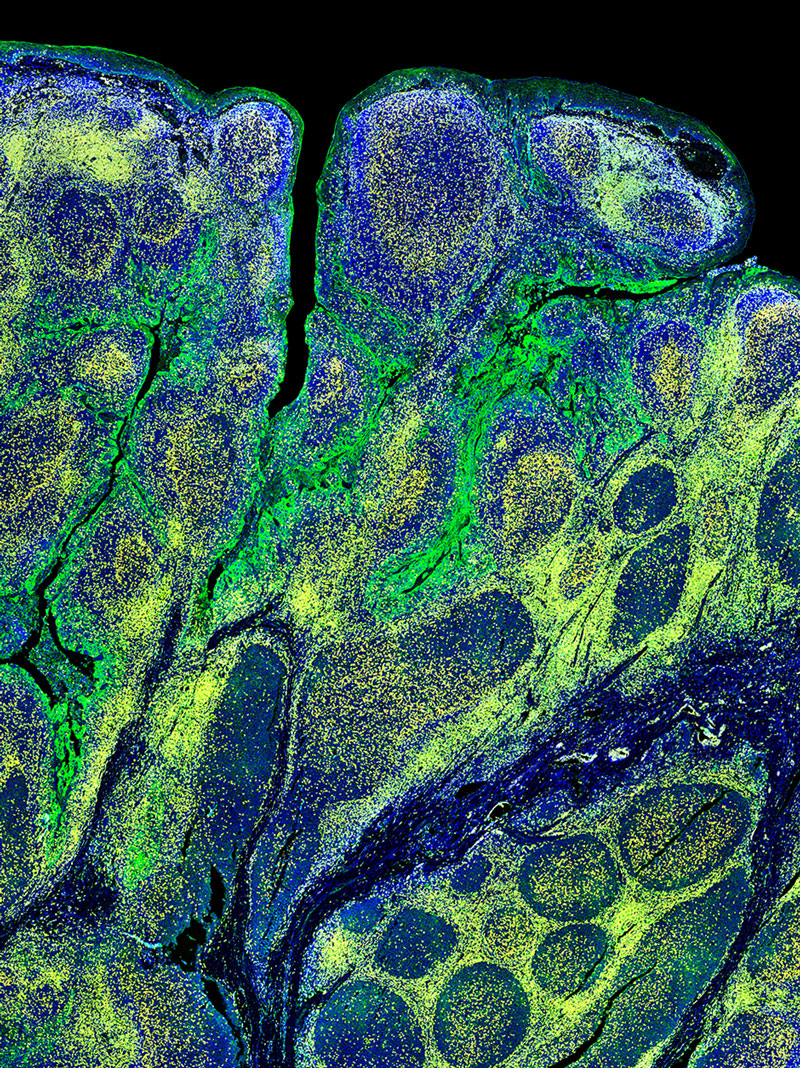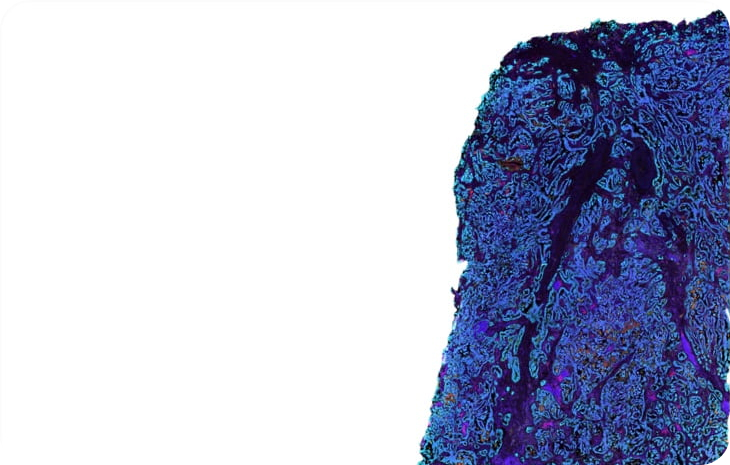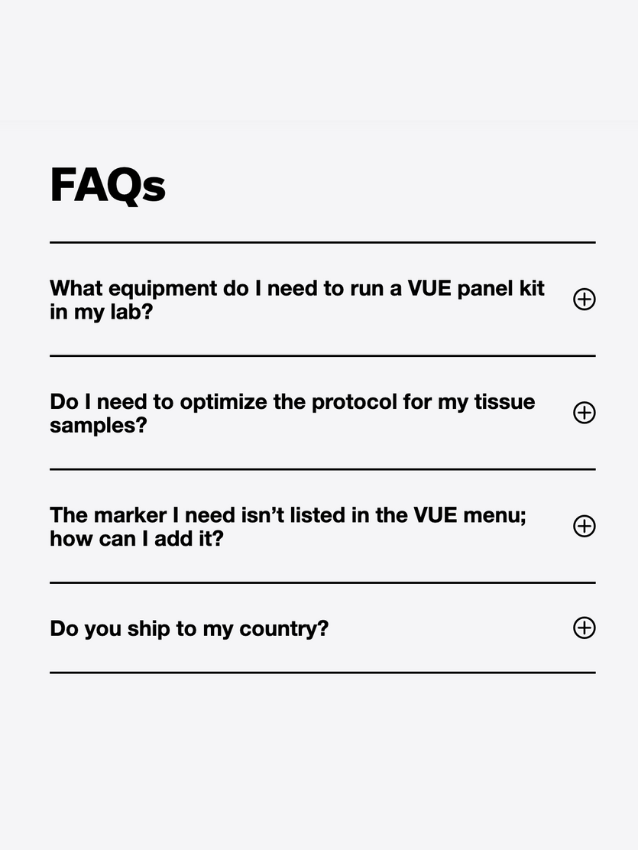
Expert Spotlight
Lorenz Rognoni, PhD
What is the most relevant tissue biomarker assay for my clinical research study?
Relevant for
Biopharma, CROs
Overview. In the early phase of clinical testing during drug development, researchers need to identify markers that best distinguish different patient groups, such as responders versus non-responders. At this stage, there are often many ideas about which markers, cellular phenotypes reflected by markers, or spatial interactions between them, might reveal these differences, but it’s important to narrow down this long list of possibilities to the most promising subset of markers.
Study Plan
Identify the optimal panel of markers to distinguish responses to treatment
Study description: Two groups of 40 samples are available (e.g., a mixture of biopsies and resections), corresponding to responders and non-responders. All samples are stained for a larger number of markers to identify a set of four markers which enables the most significant differentiation between the two patient groups.
Staining and imaging: In collaboration with Ultivue’s assay development scientists, two InSiItuPlex® staining panels, an 8 plex and a 4 plex, are selected to get a comprehensive view of the immune landscape within the tumor microenvironment of the particular sample type. Whole slide staining is performed using the first 4 plex panel, followed by a first round of imaging; this process is repeated twice (4 markers in each round), and the samples then undergo same-slide H&E staining. The resulting images are superimposed using UltiStacker® software.
Image analysis: Ultivue’s standard image analysis package is deployed to interrogate the phenotypes and numbers of immune cells in each sample. Our extended service package is added to include pathologist annotations for tumor enrichment on a subset of cases. The results include:
- Tissue detection (based on DAPI or H&E)
- Epithelium/non-epithelium segmentation based on cytokeratin staining
- Coarse artefact exclusion (folds, blur, bubbles, red blood cells)
- Cell detection via nucleus identification (DAPI)
- Phenotyping based on marker positivity in each cell
- Densities and percentages of all single positive cells
- Densities and percentages of 30 phenotypes based on the defined panels
- Cell positions for later data analysis
- Visual QC of results
Data Analysis: Looking deeper into these results to identify the most significant differences amongst the patient groups can include:
- Identifying the phenotypes and cells with the most significant differences between the responders and non-responders
- Evaluating differences in spatial localization within the identified tissue compartments
- Investigating differences in spatial relationships, such as cell clustering and co-localization of cells
Results delivery
Image analysis and data mining can be used to quantify biological responses and select a small set of highest relevance markers
A report on the study plan and outcomes, including key findings and data summaries, is provided along with Ultivue’s recommendation for a 4-plex panel that provides the most significant data for distinguishing between responders and non-responders in future studies.







